Standing at the end of Budapest’s grand Andrássy Avenue, Heroes’ Square (Hősök tere) immediately captures the imagination with its commanding statues, towering columns, and sweeping open space. As one of the most visited and photographed landmarks in the Hungarian capital, the square is more than just an architectural marvel, it is a powerful symbol of national pride and collective memory. Constructed at the turn of the 20th century, Heroes’ Square commemorates the thousand-year history of the Hungarian people, honoring both mythic founders and influential leaders who shaped the nation’s identity. With its rich historical context and cultural significance, the square remains a focal point for both reflection and celebration in modern Hungary.
Historical Background
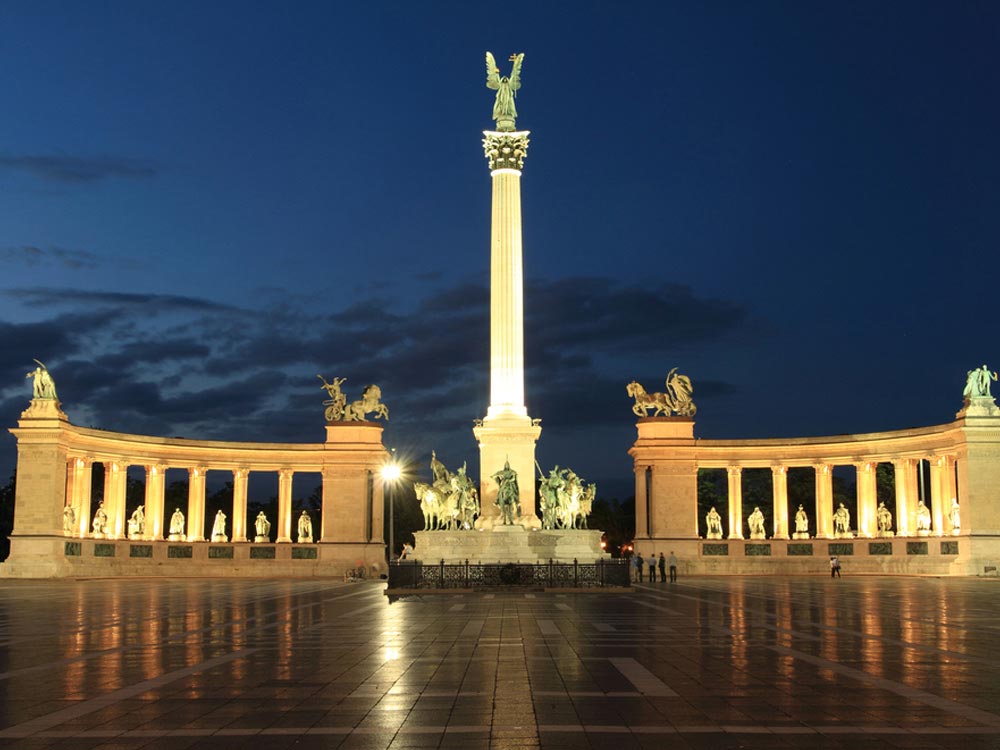
Heroes’ Square (Hősök tere) was conceived as a monumental tribute to Hungary’s millennial anniversary, commemorating 1,000 years since the Magyars settled in the Carpathian Basin in 896 AD. Initiated in 1896, the project was part of a broader urban development plan that included the construction of the Millennium Monument, the Museum of Fine Arts, and the Palace of Art, all designed by architect Albert Schickedanz and sculptor György Zala.
The central feature of the square, the Millennium Monument, consists of a 36-meter-high Corinthian column topped by a statue of Archangel Gabriel, who holds the Hungarian Holy Crown and the apostolic double cross. According to legend, Gabriel appeared to St. Stephen, the first king of Hungary, in a dream, offering him the crown as a divine endorsement of his reign.
Construction of the monument began in 1896 but faced several delays due to political debates and logistical challenges. The architectural elements were largely completed by 1900, with the final statues installed by 1929. Initially, the colonnades featured statues of Hungarian kings and leaders, including members of the Habsburg dynasty, reflecting Hungary’s status within the Austro-Hungarian Empire.
Throughout the 20th century, the square underwent several transformations, mirroring the nation’s turbulent history. During the Communist era, statues of Habsburg rulers were removed and replaced with figures representing Hungarian national heroes, such as Lajos Kossuth and Ferenc Rákóczi II. Despite these changes, Heroes’ Square has remained a central site for national ceremonies and public gatherings, symbolizing Hungary’s enduring identity and resilience.
Monument Details
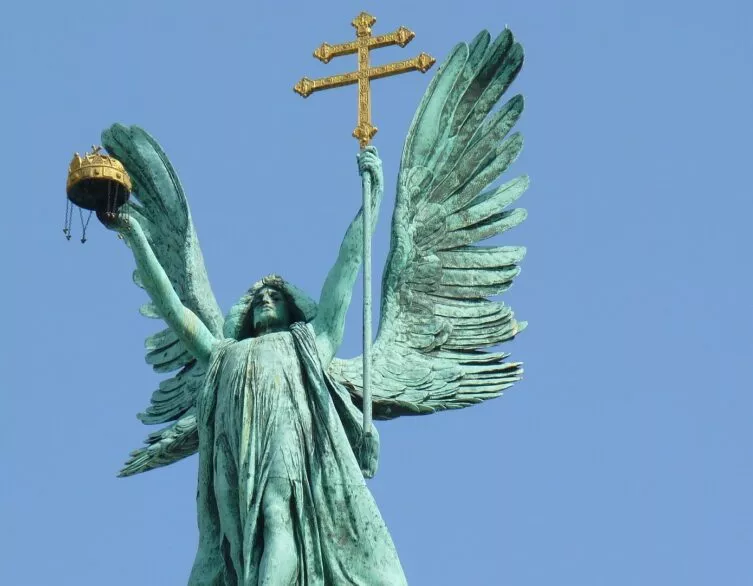
At the heart of Heroes’ Square stands the Millennium Monument, a grand neoclassical ensemble that pays tribute to Hungary’s rich history. The monument’s central feature is a 36-meter-high Corinthian column crowned by a statue of Archangel Gabriel. In his right hand, Gabriel holds the Holy Crown of St. Stephen, symbolizing Hungary’s statehood, while his left hand holds the apostolic double cross, representing the nation’s Christian heritage.
Surrounding the base of the column are equestrian statues of the seven chieftains of the Magyars, who led the Hungarian tribes into the Carpathian Basin in the 9th century. These figures, led by Árpád, are depicted in dynamic poses, capturing the spirit of the nation’s founders.
Flanking the central column are two semi-circular colonnades, each housing seven statues of prominent figures from Hungarian history.
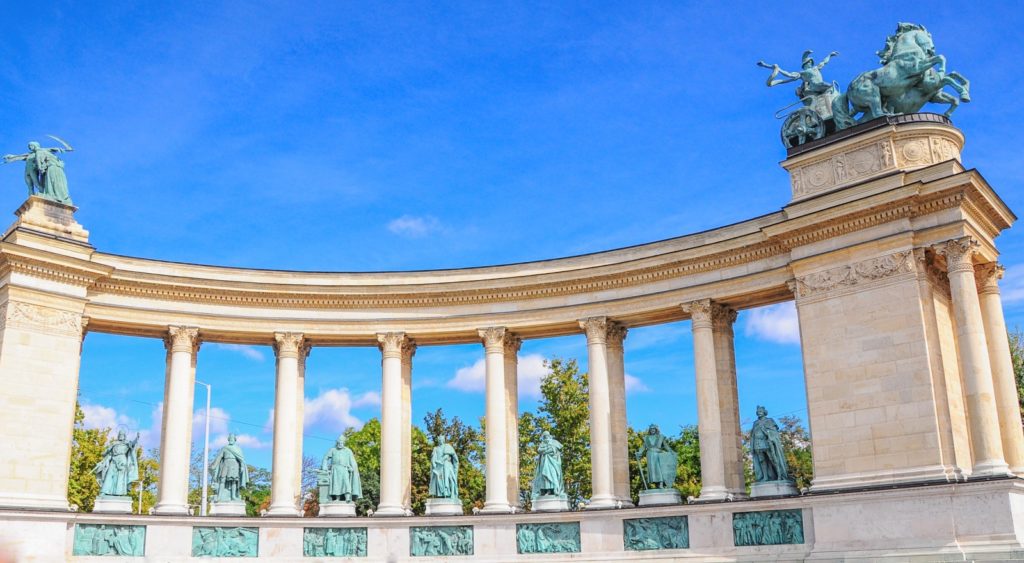
The left colonnade features:.
- King Stephen I
- King Ladislaus I
- King Coloman
- King Andrew II
- King Béla IV
- King Charles I
- King Louis I
The right colonnade includes:
- John Hunyadi
- King Matthias Corvinus
- István Bocskai
- Gabriel Bethlen
- Imre Thököly
- Francis II Rákóczi
- Lajos Kossuth
Each statue is accompanied by a relief depicting a significant moment from the individual’s life, providing insight into their contributions to Hungarian history.
Atop the colonnades are allegorical sculptures representing concepts such as War, Peace, Work and Welfare, and Knowledge and Glory, further enriching the monument’s symbolic narrative.
In front of the central column lies the Monument of National Heroes, a cenotaph honoring those who sacrificed their lives for Hungary’s independence and freedom. While not an official tomb, it serves as a poignant reminder of the nation’s enduring spirit.
Cultural and Political Significance
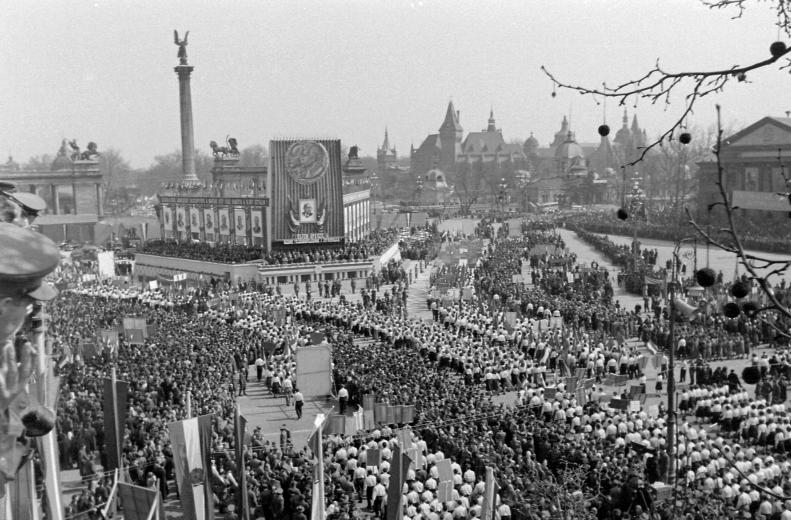
Heroes’ Square (Hősök tere) has long stood as a powerful symbol of Hungarian national identity, serving as a backdrop for pivotal moments in the nation’s history. Its role extends beyond mere commemoration; the square has been a stage for political expression, public gatherings, and cultural events that reflect Hungary’s evolving narrative.
One of the most significant events held at Heroes’ Square was the reburial of Imre Nagy on June 16, 1989. Nagy, the Prime Minister during the 1956 Hungarian Revolution, was executed in 1958 after a secret trial. His reinterment, attended by approximately 250,000 people, became a symbol of the nation’s break from its communist past and a step toward democratic reform.
During the communist era, the square was often used for state-sponsored events and demonstrations, reflecting the government’s desire to align national history with socialist ideology. Statues of Habsburg rulers were removed and replaced with figures representing Hungarian national heroes, such as Lajos Kossuth and Ferenc Rákóczi II, to better fit the narrative of national independence and resistance.
In contemporary times, Heroes’ Square continues to be a focal point for national celebrations and cultural events. It hosts ceremonies on national holidays, concerts, and exhibitions, reinforcing its status as a living monument that bridges Hungary’s past with its present.
Current Role and Surroundings
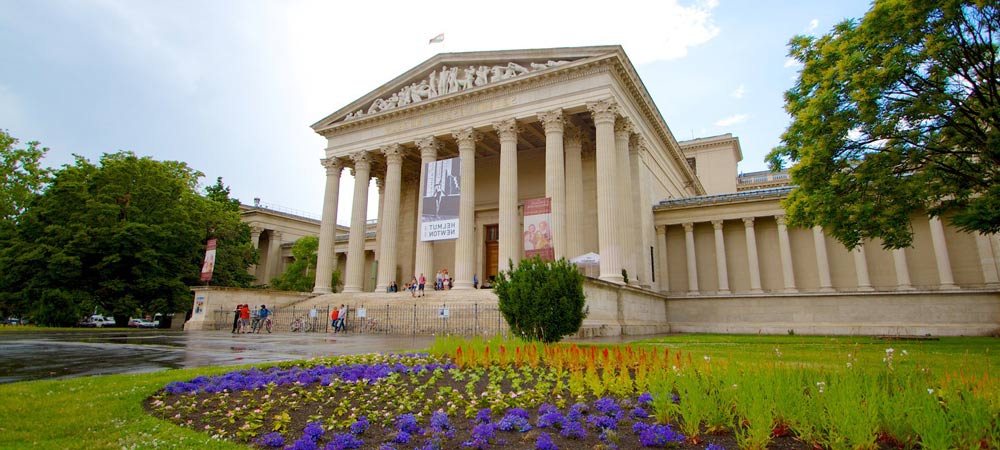
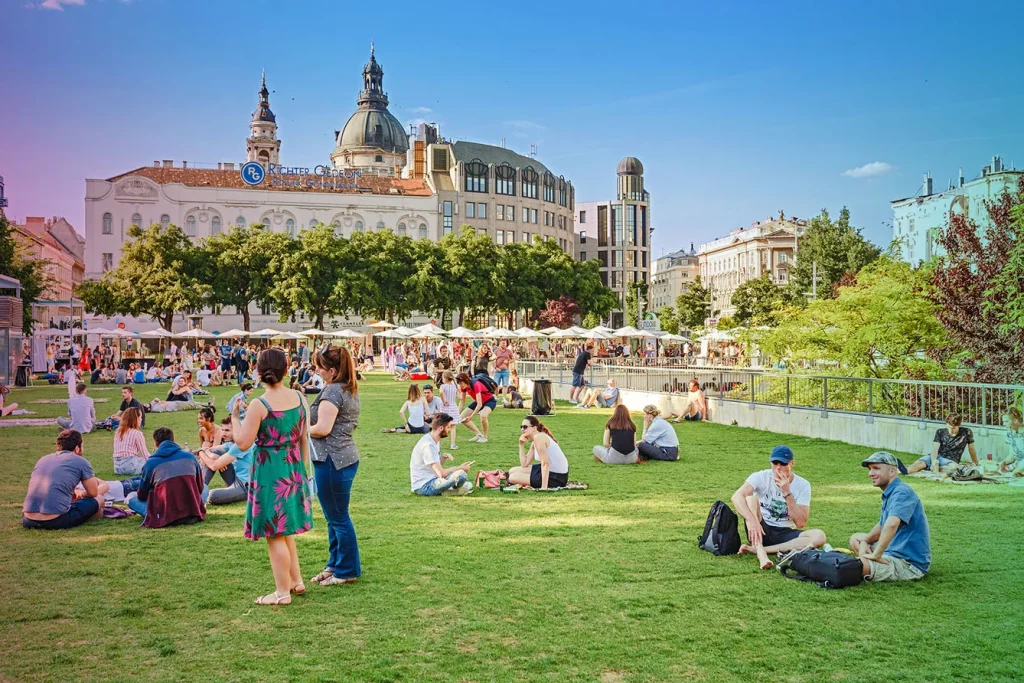
Today, Heroes’ Square (Hősök tere) serves as a vibrant cultural and civic hub in Budapest, seamlessly blending historical reverence with contemporary urban life. Located at the terminus of the grand Andrássy Avenue, the square is not only a focal point for tourists but also a cherished gathering place for locals.
Flanking the square are two prominent cultural institutions: the Museum of Fine Arts and the Hall of Art (Műcsarnok). The Museum of Fine Arts, established in 1906, houses an extensive collection of European art, ranging from ancient Egyptian artifacts to masterpieces by Old Masters. Opposite it, the Hall of Art, completed in 1896, is dedicated to contemporary art exhibitions and operates without a permanent collection, offering a dynamic space for rotating exhibits.
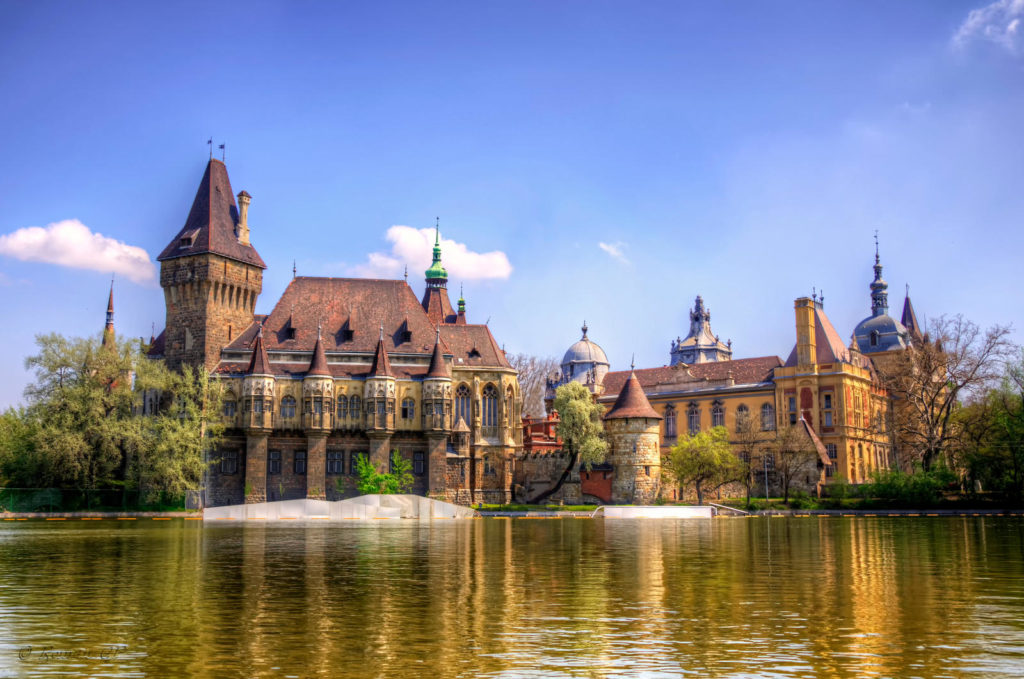
Beyond the square lies the expansive City Park (Városliget), one of Budapest’s most beloved green spaces. Within the park, visitors can explore the Vajdahunyad Castle, which showcases architectural styles from various periods of Hungarian history, and the Széchenyi Thermal Bath, renowned as one of Europe’s largest and most popular spa complexes.
Adjacent to the square is the Timewheel (Időkerék), a monumental hourglass unveiled in 2004 to commemorate Hungary’s accession to the European Union. This 60-ton structure, made of granite, steel, and glass, takes an entire year for the sand to flow from the upper to the lower chamber and is manually rotated annually on New Year’s Eve.
Throughout the year, Heroes’ Square hosts various events, concerts, and festivals, reinforcing its role as a dynamic space for public engagement. Its accessibility is enhanced by the nearby Hősök tere metro station on the M1 line, as well as multiple bus and trolleybus routes, making it a convenient destination for both residents and visitors.
In essence, Heroes’ Square continues to embody the spirit of Hungary, serving as a testament to its rich history while actively participating in the nation’s present-day cultural and social life.
Heroes’ Square (Hősök tere) stands as a timeless symbol of Hungary’s national identity, offering both a look into the nation’s storied past and a vibrant space for contemporary cultural life. From its monumental statues commemorating historical figures to its role in modern-day celebrations, the square transcends its architectural magnificence, becoming a dynamic center of national pride and reflection. Surrounded by cultural landmarks like the Museum of Fine Arts and the Hall of Art, and situated at the entrance to the expansive City Park, Heroes’ Square is not only an essential part of Budapest’s urban landscape but also a hub of activity for both locals and tourists. As a space that connects the past with the present, Heroes’ Square continues to embody the resilience, unity, and enduring spirit of the Hungarian people.

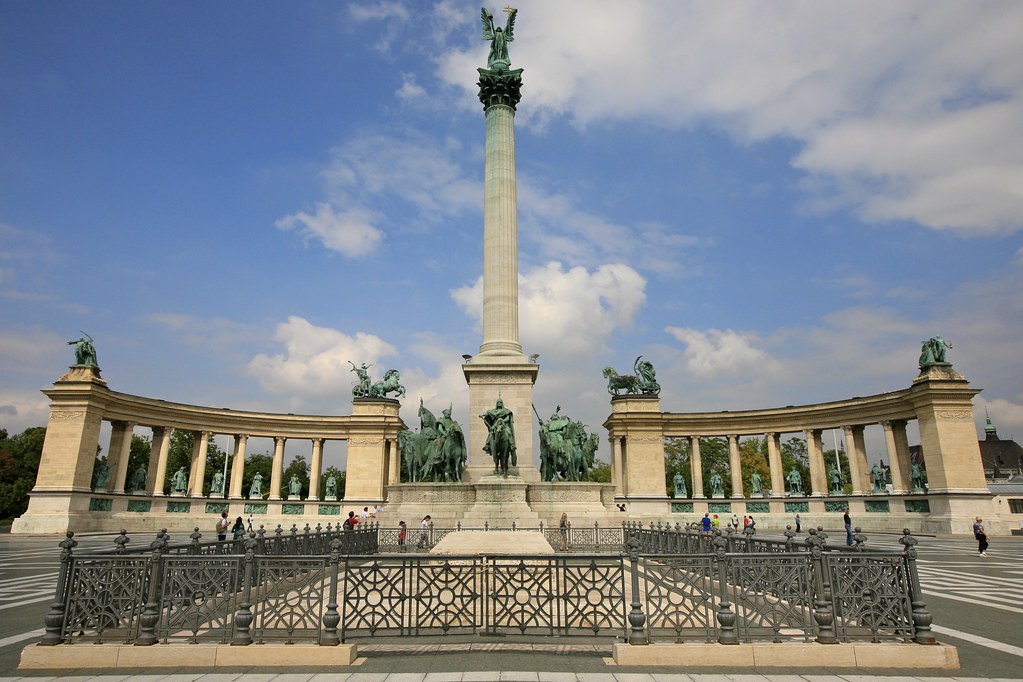
Comments are closed.